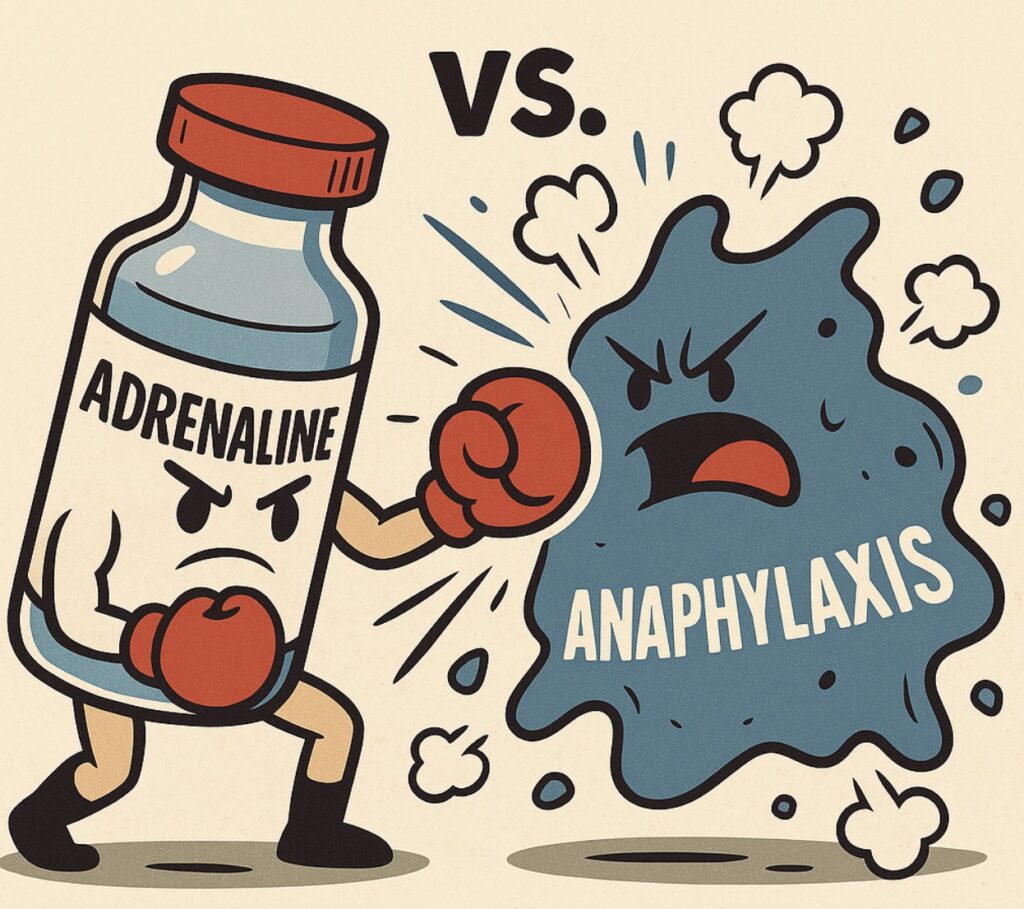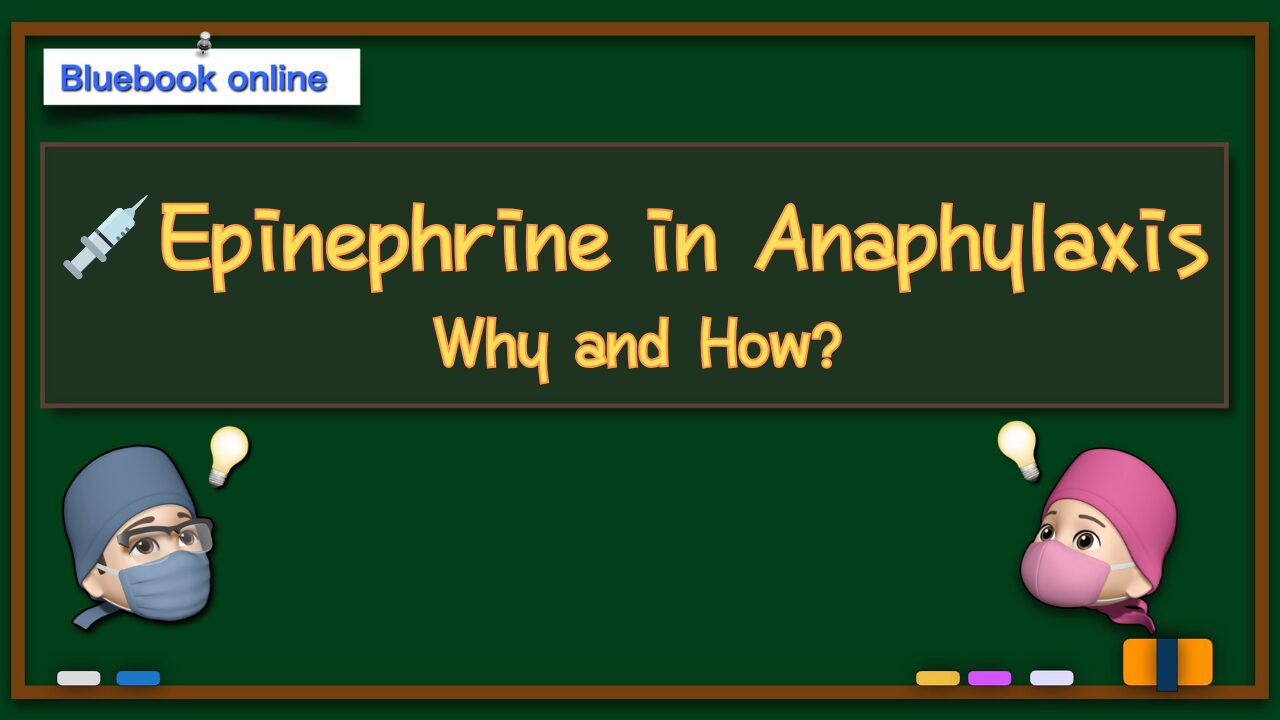👉👉 🇺🇸 All Posts 🇬🇧 / 🇯🇵 記事一覧 🇯🇵 👈👈
♦️ Introduction
This is part of the “Simple Q&A Series” for nurses and junior doctors😊.
🤔 “I know epinephrine should be given in anaphylaxis, but why exactly?”
✅ The Answer
Epinephrine counteracts the symptoms of anaphylaxis because it combines several key effects:
- Circulatory support (↑ cardiac contractility + peripheral vasoconstriction): α1, β1
- Bronchodilation: β2
- Inhibition of chemical mediator release: β2

♦️ More Details
🔷 Common clinical features of anaphylaxis
- Shock
- Bronchospasm
- Mucosal edema (leading to airway obstruction)
🔷 Epinephrine and adrenergic receptors
Everyone knows that “epinephrine is the first-line drug for anaphylaxis,” but when asked why, many struggle to explain.
Epinephrine acts on all adrenergic receptors (α1, α2, β1, β2, β3). (β3 can be ignored in this context.)
By stimulating α1, β1, and β2 receptors, epinephrine directly counters the key pathophysiological changes of anaphylaxis—hypotension, bronchospasm, and airway swelling.
In addition, epinephrine suppresses the release of chemical mediators (e.g., histamine, leukotrienes) from mast cells. These mediators otherwise increase vascular permeability (causing edema), dilate peripheral vessels (causing hypotension), and constrict bronchial smooth muscle.
By preventing further mediator release, epinephrine halts progression of symptoms.
♦️ Routes of Administration
Intramuscular injection (IM) is the standard.
- 👨 Adults: 0.3–0.5 mg IM into the mid-anterolateral thigh (vastus lateralis)
- 👦 Children: 0.01 mg/kg IM These muscles are large and well vascularized, allowing rapid absorption.
- IM injection: Peak plasma concentration (Tmax) ≈ 8 minutes
- Subcutaneous injection: Tmax > 30 minutes → not recommended
- In obese patients, use a longer needle to ensure adequate intramuscular delivery.
Intravenous administration (IV) may be considered in cases of severe hypotension or circulatory collapse, especially if IV access is already established. The Japanese Society of Anesthesiologists (JSA) Practical Guide also includes IV epinephrine as an option in these settings.
- Severe hypotension: 0.2 μg/kg slow IV
- Circulatory collapse: 0.05–0.3 mg slow IV
- High-dose rapid IV boluses should be avoided due to the increased risk of cardiovascular adverse events. Always dilute (e.g., 1:10) and administer slowly or as an infusion.
📝 Summary
- Epinephrine (Bosmin®) is the first-line treatment for anaphylaxis.
- Key receptor actions: ✔ α1 → vasoconstriction, ↑ blood pressure ✔ β1 → ↑ cardiac contractility, circulatory support ✔ β2 → bronchodilation + inhibition of mediator release
- Intramuscular injection into the thigh is standard (adult: 0.3–0.5 mg, child: 0.01 mg/kg).
- IM reaches peak concentration in ~8 min; subcutaneous takes >30 min → not suitable.
- In severe hypotension or shock, IV epinephrine may be considered, but only in diluted form and administered slowly due to higher cardiovascular risk.
- The JSA Practical Guide recommends IM as first choice, with IV reserved for critical situations.
🔗 Related articles
- coming soon
📚 References & Links
- Japanese Society of Anesthesiologists (JSA) Safety Committee. Practical Guide for the Management of Anaphylaxis:English version. Journal of Anesthesia (2021) 35:778–793
- World Allergy Organization (WAO). Anaphylaxis: Guidelines for Clinical Practice. World Allergy Organ J. 2011;4(2):13–37. Link
- Lieberman P, et al. The diagnosis and management of anaphylaxis practice parameter: 2015 update. J Allergy Clin Immunol. 2015;115(3):638–649.

コメントを投稿するにはログインしてください。